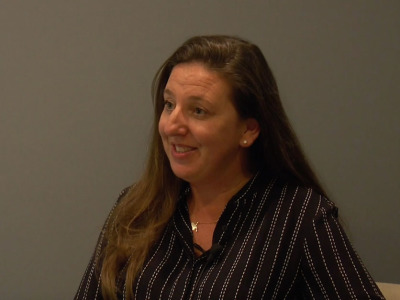The incoming Biden administration is expected to take a new look at using crop insurance to encourage farming measures that reduce greenhouse gas emissions and protect water quality, but the effort will face an old challenge — finding the data to prove that the practices don’t increase program losses.
A group of former Obama administration officials, including Robert Bonnie, the head of Joe Biden’s transition team for USDA, are recommending the incoming administration move quickly to develop ways to use crop insurance to incentivize climate-friendly practices.
The group’s Climate21 policy recommendations note USDA has the legal authority to offer premium discounts to promote practices that can mitigate greenhouse gas emissions. “A report can be mandated within the first 30 days and completed in the first 180 days, with policy changes” in place by fiscal 2022, which begins in October 2021, the group said.
The proposal dovetails with a recommendation issued last month by a coalition of leading farm and environmental groups, the Food and Agriculture Climate Alliance. The group called for directing USDA to study the interaction between crop insurance and soil health practices and the impact on crop productivity, insurance liabilities and premium rates.
The critical question is whether USDA can obtain the data to show that premium discounts for planting cover crops and undertaking other carbon-saving practices won’t affect the actuarial soundness of the insurance program, which USDA is required by law to protect. The concern is that farmers could get discounts for practices that wind up reducing yields. Crop insurers can be expected to insist on USDA having adequate data on the impact of the practices.
Practices such as cover crops can have varying impacts on crop returns and soil carbon levels depending on the region of the country, which is an issue facing the emerging ag carbon markets.
“It’s not that anybody is against any of these practices. We are all for it as long as the data is there to back it up, so that we can have accurate premiums as required by the law,” said Tara Smith, vice president of federal affairs for a crop insurance group, CIRB — Crop Insurance and Reinsurance Bureau.

Tara Smith, CIRB
Art Barnaby, a retired Kansas State University professor who has developed some crop insurance products, said he doubts “the experts have the data to back some of those practices, but if the practice reduces farmers cost or improve production, then they would likely take the discount.”
The Climate21 report briefly acknowledges the data challenge involved with getting USDA approval for premium discounts: “Measuring the potential GHG impact of this approach is very difficult, but it has the potential to influence management practices across tens of millions of acres, if not more,” the report said.
There is a precedent for offering discounts for a particular farming practice. Monsanto, now part of Bayer, convinced USDA in 2007 to authorize premium discounts for Bt corn, which is genetically engineered to resist insect pests. Monsanto provided its own proprietary data to USDA’s Risk Management Agency showing, in part, the reduced insect damage to plant roots made the corn more resistant to drought.
So far, USDA has no such source of private data, although some tech companies likely have extensive records on farmer clients.
USDA does have internal records that could be used to evaluate the impact of cover crops and other practices: RMA has yield data, and the Natural Resources Conservation Services has records on which farmers are receiving payments for carbon-saving practices through the Conservation Stewardship Program and other approaches.
The challenge is merging and studying that data as well as protecting its privacy. The AGree coalition, which has been working to promote the concept of insurance incentives for conservation practices, urged Congress to use the 2018 farm bill to authorize researchers to analyze USDA’s internal data, but advocates ultimately couldn’t overcome farm groups’ privacy concerns.
Interested in more coverage and insights? Receive a free month of Agri-Pulse.
One alternative to offering premium discounts that avoids the insurers’ concern about increasing loss ratios is to subsidize premium reductions for climate-friendly practices. In that case, the premium reductions work something like a conservation program payment.
Iowa and Illinois operate demonstration projects that offer a $5-an-acre reduction on a first-come, first-served basis to participating farmers’ premiums.

Ferd Hoefner, NSAC
The amount of land enrolled in the Iowa program has fluctuated form 168,187 acres in 2017 to 135,268 acres in 2018 and 198,649 acres in 2019, according to state data. Some 1,700 farmers have been enrolled at some point.
Enrollment for 2021 crops began in November. The Iowa Department of Agriculture and Land Stewardship notifies RMA each year of the farmers eligible for the incentive program, for which funding is capped. RMA provides that information to the crop insurance companies, and the reduction is then applied to the premiums that farmers are charged.
The Illinois Agriculture Department has an agreement with RMA to fund its program up to 50,000 acres.
Ferd Hoefner, strategic policy adviser to the National Sustainable Agriculture Coalition, said increasing premium subsidies could be a more immediate way of incentivizing conservation practices. Increasing premium subsidies “does not affect the loss ratios at all, just how much of the premium the farmer is paying for,” he said.
A bill introduced in the House earlier this year by Rep. Chellie Pingree, D-Maine, the Agriculture Resilience Act, would specify practices for which RMA should consider premium discounts: cover crops, resource-conserving crop rotations, management-intensive rotational grazing, composting, and “other risk-reducing and soil health promoting farming practices.”
But the bill stops short of mandating that USDA offer the discounts and leaves open the question of whether they can be proven to be actuarially sound.
Pingree spokeswoman Victoria Bonney said a provision in the 2018 farm bill laid the groundwork for USDA to do the necessary analysis of its own data. The bill directed USDA to “identify available data sets within the Department of Agriculture regarding the use of conservation practices and the effect of such practices on farm and ranch profitability (including such effects relating to crop yields, soil health, and other risk-related factors).”
For more news, go to Agri-Pulse.com.


